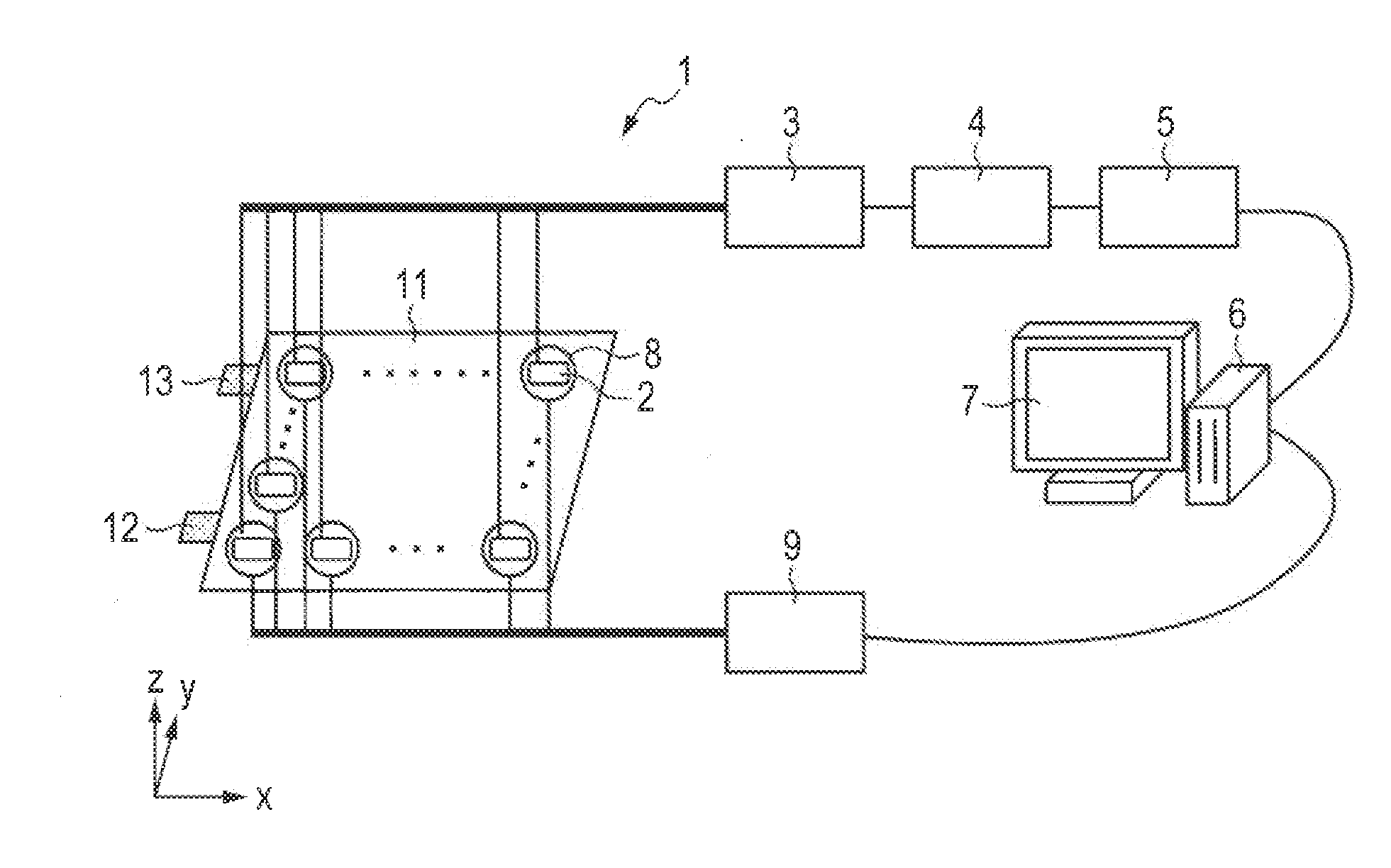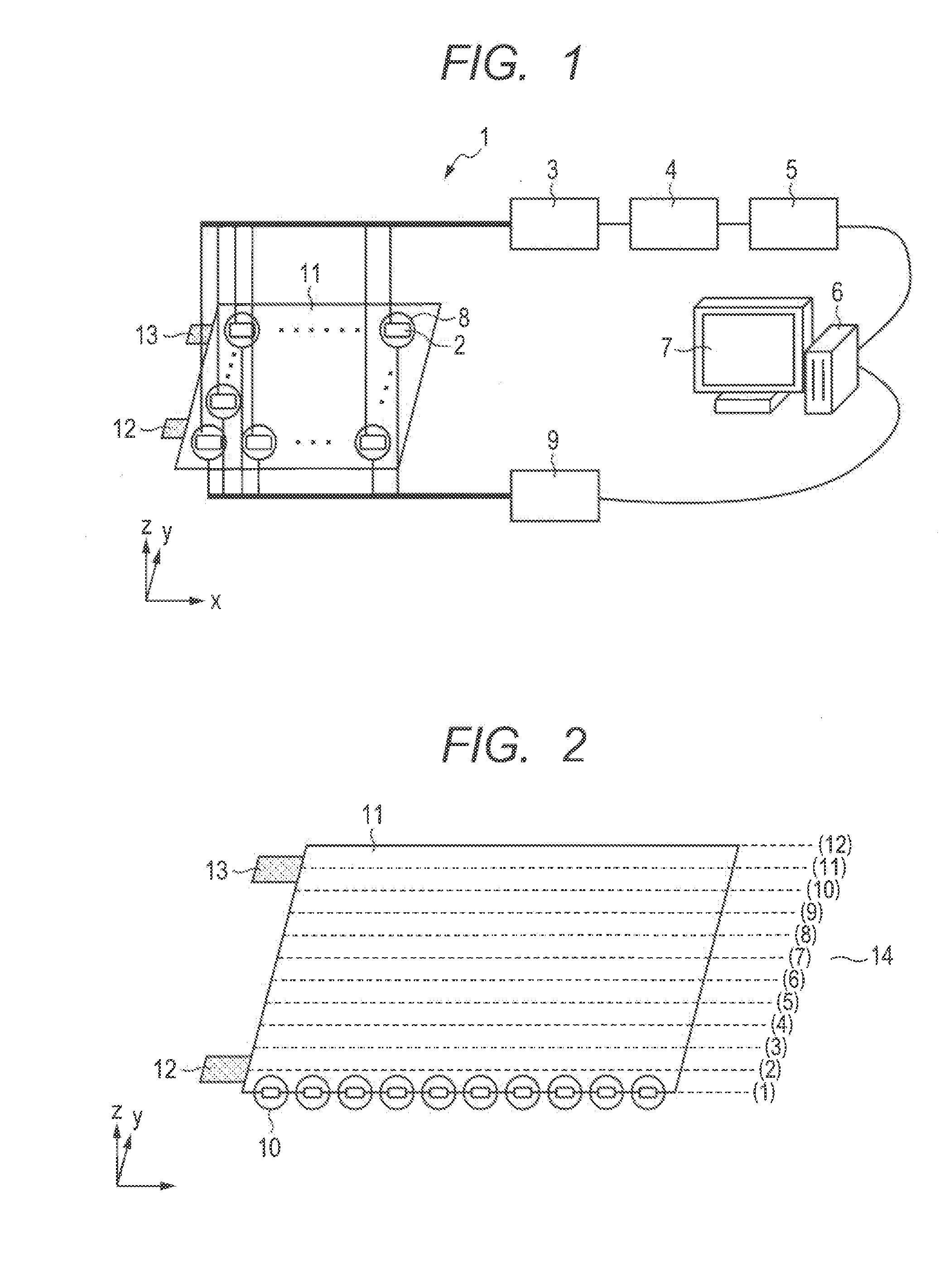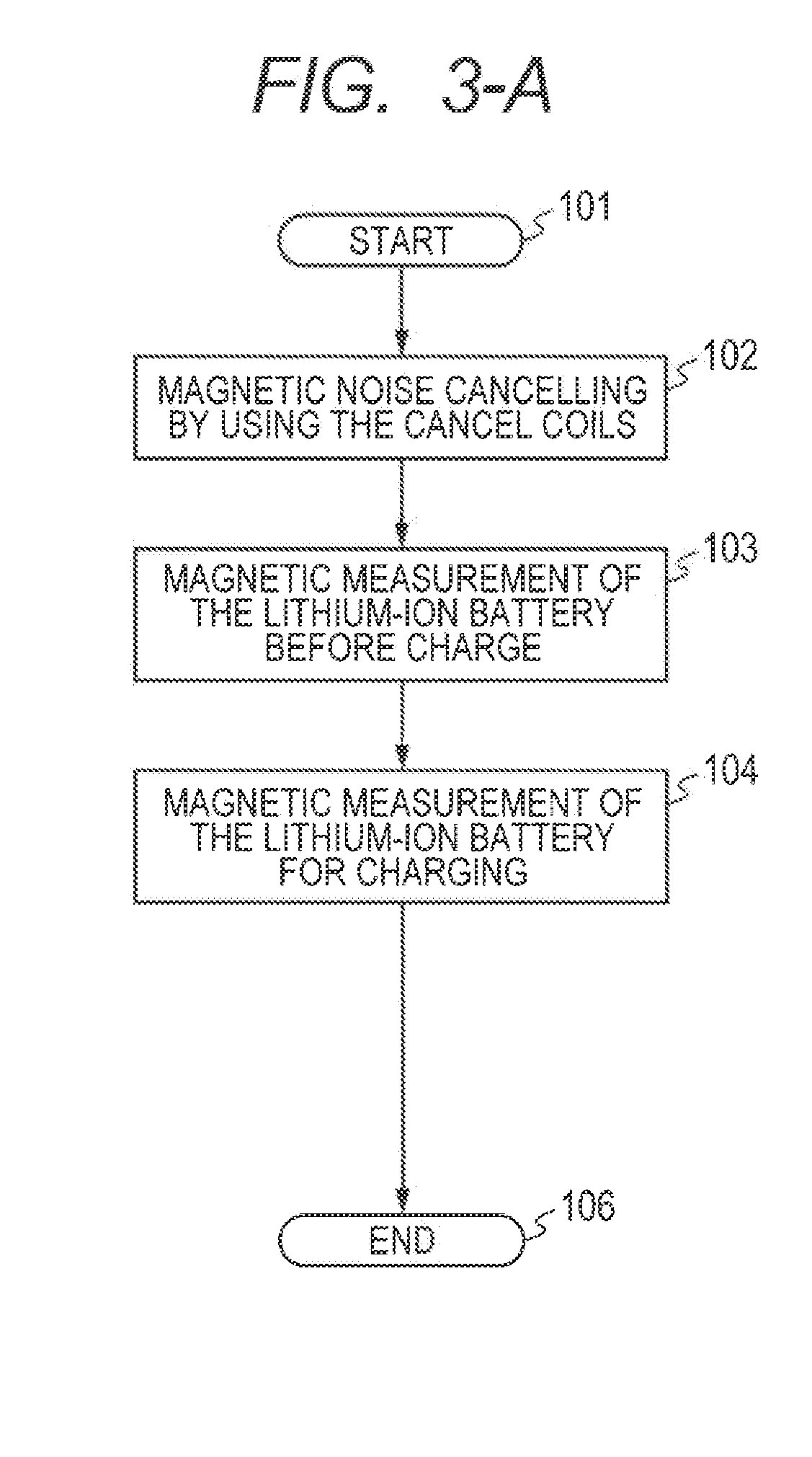Magnetic measurement system and method for measuring magnetic field
a magnetic field and measurement system technology, applied in the field of magnetic measurement system for batteries, can solve the problems of inability to record the magnetic field generated by electric current in the battery, the inability to evaluate the difficulty of evaluating a local part of the battery, etc., and achieve the effect of accurate measuremen
- Summary
- Abstract
- Description
- Claims
- Application Information
AI Technical Summary
Benefits of technology
Problems solved by technology
Method used
Image
Examples
first embodiment
of Method
[0056]As the first embodiment of a method according to the invention, a procedure in which environment noise of a magnetic signal from a lithium-ion battery recorded when charging is removed by using a magnetic signal measured before a start of charging (a correction-magnetic field signal) and electric current distribution in the lithium-ion battery is accurately displayed is described below.
[0057]A flow chart of the processes of the analysis procedure in this embodiment is illustrated in FIG. 4A. In the following description, a step number corresponding to each process of procedure is represented in parentheses.
[0058]First, with ambient noise cancelled by each cancel coil 8, the procedure is started (201), and for each magnetic sensor 2, an average magnetic signal for correction is calculated from a magnetic signal recorded before charge (a correction-magnetic field signal) (202). Subsequently, for each magnetic sensor an average magnetic signal for charging is calculated ...
second embodiment
of Method
[0075]In the second embodiment, environment noise of a magnetic signal from a lithium-ion battery recorded when discharging is removed by using a magnetic signal recorded before a start of discharge (a correction-magnetic field signal) and electric current distribution in the battery is accurately displayed.
[0076]A flow chart of the processes of the analysis procedure in this embodiment is illustrated in FIG. 4B. When the procedure is started (201), firstly, with ambient magnetic noise cancelled by each cancel coil, an average magnetic signal for correction is calculated for each magnetic sensor 2 from a magnetic signal recorded before discharge (a correction-magnetic field signal) (202). Next, for each magnetic sensor, an average magnetic signal for discharging is calculated (203-2), and a difference is calculated by subtracting the average magnetic signal for data correction from the average magnetic signal for discharging (204-2). Electric current distribution is then ca...
third embodiment
of Method
[0085]In the third embodiment, a magnetic field variation is calculated using a magnetic signal at a certain measurement time during charging as a reference and electric current variation distribution in a battery is accurately displayed.
[0086]A flow chart of a procedure of analysis processes in this embodiment is illustrated in FIG. 17. When the process is started (301), firstly, with ambient magnetic noise cancelled by each cancel coil 8, an average magnetic signal for charging is calculated (302). Then, a difference is calculated by subtracting an average magnetic signal at a certain measurement time during charging from the average magnetic signal for charging (303), and electric current variation is calculated and visualized (304) . Since the process 302 is the same as the process 203-1 described in the first embodiment, description of this process is omitted.
[0087]In the process 303, the difference is calculated by subtracting the average magnetic signal at a certain ...
PUM
 Login to View More
Login to View More Abstract
Description
Claims
Application Information
 Login to View More
Login to View More - R&D
- Intellectual Property
- Life Sciences
- Materials
- Tech Scout
- Unparalleled Data Quality
- Higher Quality Content
- 60% Fewer Hallucinations
Browse by: Latest US Patents, China's latest patents, Technical Efficacy Thesaurus, Application Domain, Technology Topic, Popular Technical Reports.
© 2025 PatSnap. All rights reserved.Legal|Privacy policy|Modern Slavery Act Transparency Statement|Sitemap|About US| Contact US: help@patsnap.com



